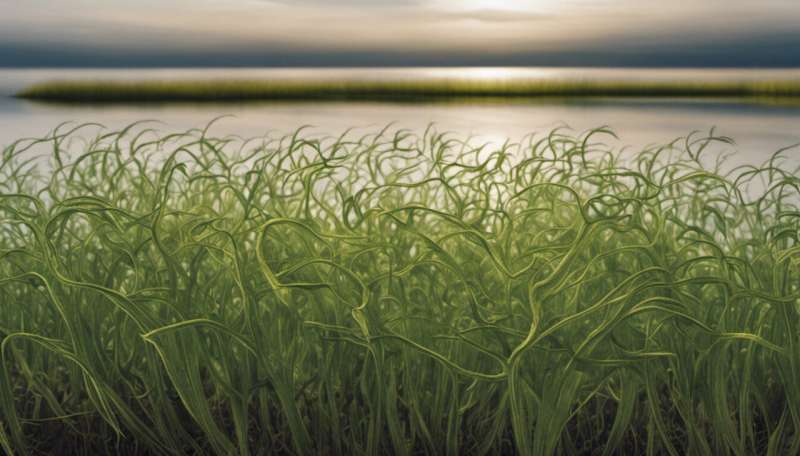Seagrass doubles its chances in last-ditch reproductive strategy

If you're faced with your own mortality you would do nearly anything to improve your chances of survival, right? So too for a species of seagrass called Posidonia australis that grows in Shark Bay.
Although seagrasses are the very foundation of the entire Shark Bay marine ecosystem, this species maintains a tenuous grip on life, growing in extreme conditions of temperature and salinity, at the edge of its distribution.
Desperate to improve their chances of survival, this seagrass has employed both known methods of reproduction that have only been recorded in one other seagrass species in the world so far—across the globe in the Mediterranean.
This attempt to increase their odds of survival was discovered by UWA School of Plant Biology and Oceans Institute senior research fellow Elizabeth Sinclair and her team while examining seagrass meadows at Useless Loop in Shark Bay.
They knew seagrasses had two methods of reproduction. They can reproduce vegetatively through rhizome extension which grows new shoots to expand the seagrass meadow, rather like the grass in your backyard.
Or they can embark on sexual reproduction in which the plant produces flowers held on a stem above the leaf canopy.
The fruits containing a single seed are later dispersed on the water surface, floating away to grow elsewhere.
Dr Sinclair's team determined the Shark Bay seagrass produced flowers and fruit, but they were surprised to discover the flowers did not contain seeds, and that small plants were growing in the place of some flowers.
Genetic markers were able to show that the small plants were identical to the seagrass plants they were growing on.
"This process is known as pseudovivipary—a situation whereby normal sexual flowers are replaced by a vegetative growth form," Dr Sinclair says.
But why would a plant bother to put energy into flower and fruit production if it didn't help them to reproduce through new seed?
Dr Sinclair theorises that the plant is attempting this reproduction technique in the hope the baby plants will float away and take root elsewhere.
But she doubts this strategy will be successful as seagrass roots are, almost unbelievably, sensitive to salt water, and none of the small plants have been observed since they separated from the flowering stems.
"We know that this seagrass meadow has low genetic diversity and it lives in a stressful environment, so both these factors may explain the failure of sexual reproduction," Dr Sinclair says.
Provided by Science Network WA
This article first appeared on ScienceNetwork Western Australia a science news website based at Scitech.



















